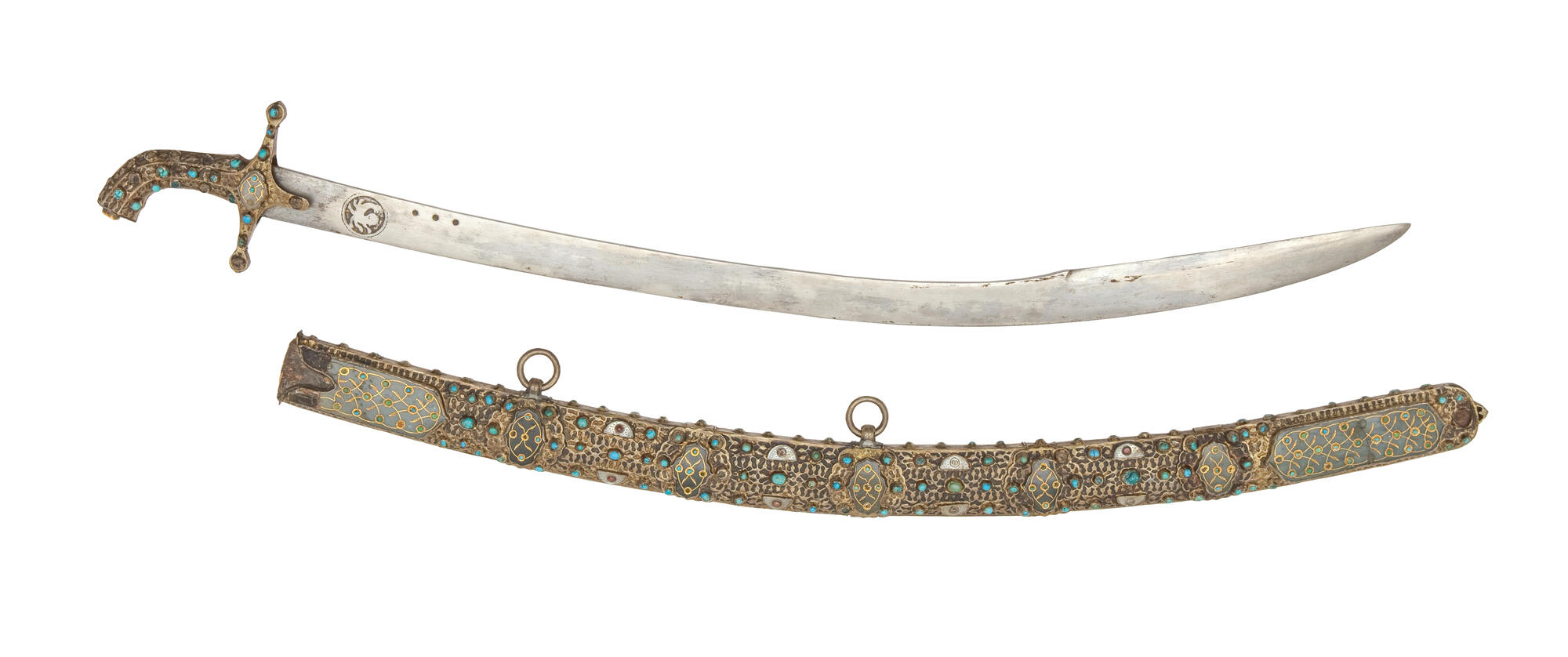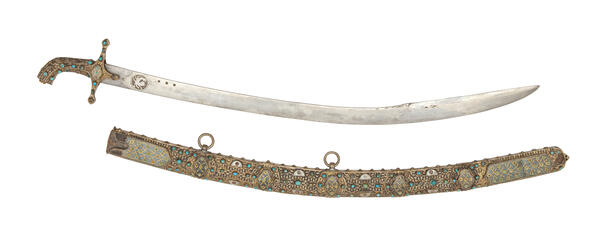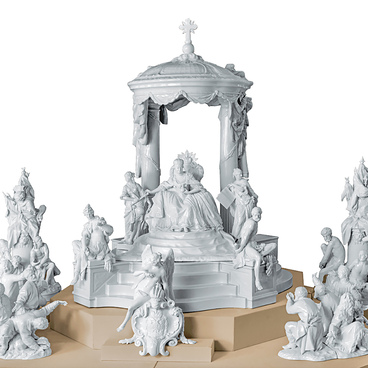The saber of Prince Dmitry Pozharsky has been housed in the collection of the State Historical Museum since 1924. According to a legend, the Muscovites presented it to the leader of the people’s militia in gratitude for helping to liberate the city from the Polish invaders.
The blade of the saber is slightly curved in the style of Persian and Turkish edged weapons. In the 17th century, craftsmen of the Moscow Armory Chamber often forged similar products based on Oriental models.
There is a stamp on the blade strip under the hilt. It depicts a fantastic beast that looks like a lion. Three circular recesses are visible below, their exact purpose is unknown. The craftsmen made the hilt and scabbard in the Turkish style, richly decorated them with overlays of gilded silver, mother-of-pearl and jasper plates, inserts of turquoise, rubies and emeralds.
The owner of the saber, Prince Dmitry Pozharsky, came from an old family of princes Starodubsky — descendants of Vsevolod the Big Nest, Grand Prince of Vladimir. In 1610, Pozharsky was appointed voivode (military governor) of the city of Zaraysk, then he participated in battles against the forces of False Dmitry II and joined the First Volunteer Army that engaged the Polish-Lithuanian invaders. Dmitry Pozharsky was seriously wounded in the battles, but in the fall of 1611, he took command of the Second Volunteer Army together with the Nizhny Novgorod elder Kuzma Minin. Under the prince’s leadership, the militia managed to defeat the Polish army near Moscow and then completely liberate the capital in October 1612. Dmitry Pozharsky was awarded a number of honors for it: he was granted a boyar rank, and he was entrusted to carry one attribute of the royal regalia — the orb — at the coronation of Tsar Mikhail Fyodorovich in 1613.
The blade of the saber is slightly curved in the style of Persian and Turkish edged weapons. In the 17th century, craftsmen of the Moscow Armory Chamber often forged similar products based on Oriental models.
There is a stamp on the blade strip under the hilt. It depicts a fantastic beast that looks like a lion. Three circular recesses are visible below, their exact purpose is unknown. The craftsmen made the hilt and scabbard in the Turkish style, richly decorated them with overlays of gilded silver, mother-of-pearl and jasper plates, inserts of turquoise, rubies and emeralds.
The owner of the saber, Prince Dmitry Pozharsky, came from an old family of princes Starodubsky — descendants of Vsevolod the Big Nest, Grand Prince of Vladimir. In 1610, Pozharsky was appointed voivode (military governor) of the city of Zaraysk, then he participated in battles against the forces of False Dmitry II and joined the First Volunteer Army that engaged the Polish-Lithuanian invaders. Dmitry Pozharsky was seriously wounded in the battles, but in the fall of 1611, he took command of the Second Volunteer Army together with the Nizhny Novgorod elder Kuzma Minin. Under the prince’s leadership, the militia managed to defeat the Polish army near Moscow and then completely liberate the capital in October 1612. Dmitry Pozharsky was awarded a number of honors for it: he was granted a boyar rank, and he was entrusted to carry one attribute of the royal regalia — the orb — at the coronation of Tsar Mikhail Fyodorovich in 1613.
After the death of Dmitry Pozharsky, the saber was transferred to the sacristy of the Solovetsky Monastery, where it was kept until 1923.


